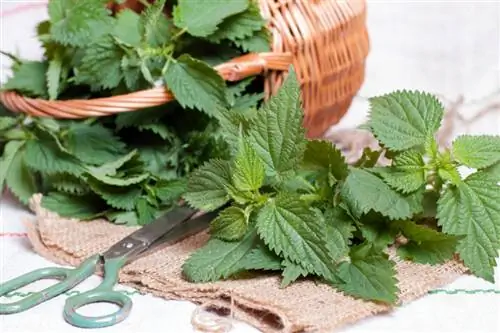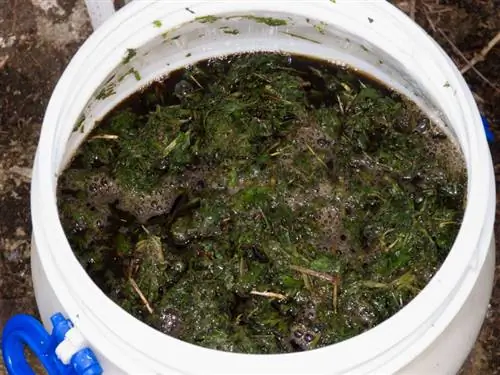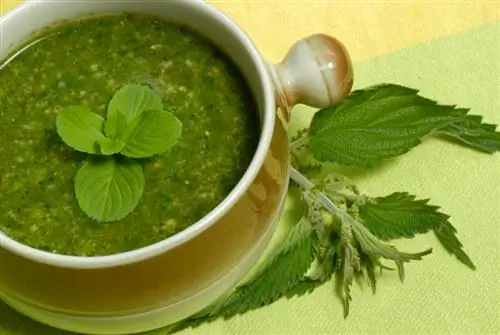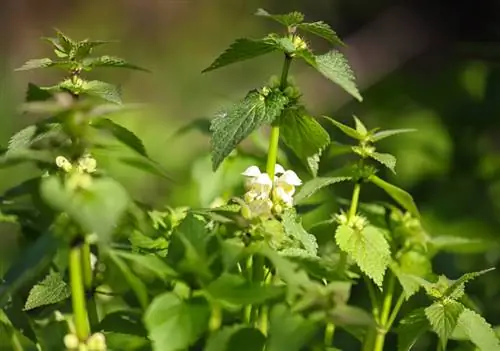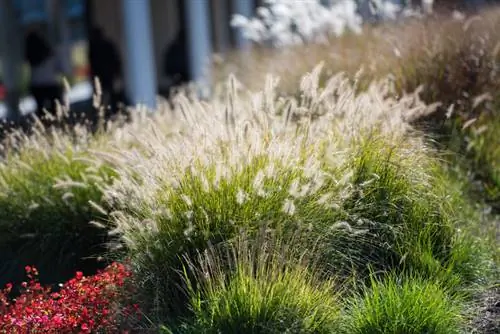- Author admin [email protected].
- Public 2023-12-16 16:46.
- Last modified 2025-01-23 11:20.
In France it is a criminal offense to publish advertisements or make recommendations for stinging nettles as fertilizer. It would be better to sell artificial fertilizers than for every gardener to produce their own fertilizer that is available free of charge in nature. Things are (still) different in this country
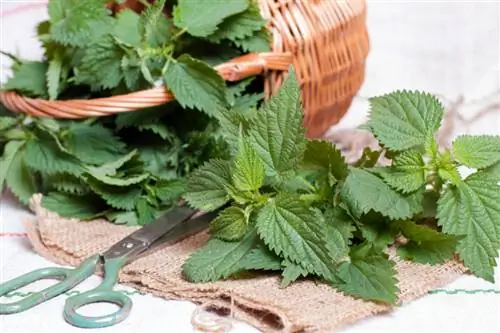
Is nettle fertilizer effective and suitable for which plants?
Stinging nettle fertilizer is an effective, natural fertilizer made from fresh nettles and water. It supplies useful and ornamental plants with nitrogen, minerals and trace elements and at the same time acts as a plant protection agent, for example against aphids.
Is the fertilizer effective?
The stinging nettle is extremely effective as an organic fertilizer. A natural fertilizer couldn't be easier to produce and could hardly be more effective. You can avoid expensive guano fertilizer, blue grain and the like if you take the trouble to make a decoction or manure from stinging nettles.
Stinging nettles grow almost everywhere where there is nutrient-rich and moist soil. They are considered nitrogen indicator plants. They not only contain a lot of it, but also lots of minerals and trace elements. With them, the plants can be fertilized every week without any worries.
For which plants is nettle fertilizer suitable?
All useful and ornamental plants (including vegetables such as tomatoes, pumpkins, cucumbers and other heavy feeders such as roses), even the lawn, can be fertilized with a nettle manure or a nettle broth. You should note the following mixing ratios (nettle manure: water) when using manure:
- Lawn: 1:50
- Young plants: 1:20
- older plants: 1:10
How is the fertilizer made?
Making nettle manure yourself is incredibly easy. All you need are nettles, water, a wooden or plastic container of at least 12 liters, scissors or a knife, a stick and gloves.
How to do it:
- Harvest 1 kg of fresh nettles
- Roughly chop the nettles
- Put nettle pieces in the container
- Add 10 liters of water
- stir with a stick
- if applicable With a protective net, for example, cover fine-meshed curtain fabric, cotton cloth, muslin diaper and fasten with rope
Now it's time to wait. Depending on the temperature at the location, it takes 1 to 2 weeks for the manure to be ready. Only when the liquid no longer foams or forms bubbles is it ready for use. Warning: It smells strongly of ammonia.
Make a nettle decoction
If you need the fertilizer immediately, you can make a decoction. However, this is less effective because it is not fermented. To do this, you also use nettle leaves and, in contrast to making manure, only let them soak in water for 12 to 24 hours.
Stinging nettle fertilizer is also a pesticide
With nettle fertilizer you kill two birds with one stone: it supplies the plants with nutrients and it acts as a plant protection agent, for example against aphids. To do this, you should apply the manure or broth directly to the affected areas.
Tip
Stinging nettle as fertilizer can also be made in late autumn, winter or spring when the plants are not growing outside. You can collect and dry the nettles at harvest time and later make a manure. You can also buy nettle powder in stores for those who are afraid of picking them themselves.

